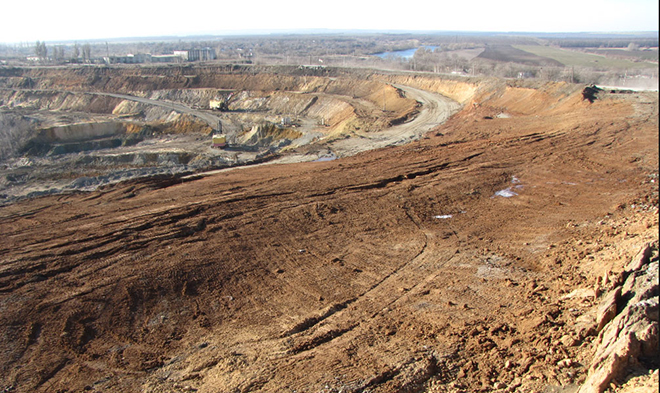S&P Global Offerings
Featured Topics
Featured Products
Events
S&P Global Offerings
Featured Topics
Featured Products
Events
S&P Global Offerings
Featured Topics
Featured Products
Events
Banking & Capital Markets
Economy & Finance
Energy Transition & Sustainability
Technology & Innovation
Podcasts & Newsletters
Banking & Capital Markets
Economy & Finance
Energy Transition & Sustainability
Technology & Innovation
Podcasts & Newsletters
S&P Global Offerings
Featured Topics
Featured Products
Events
30 Jun, 2022
By Avery Chen

| Volt Resources' Zavalievsky graphite mine is adjacent to the town of Zavallya, which is about 280 kilometers south of the Ukraine capital of Kyiv. Source: Volt Resources Ltd. |
Volt Resources Ltd. is restarting the Zavalievsky graphite mining operation in Ukraine, ending a four-month suspension that started after Russia invaded the country, the company said June 30.
The Australia-based graphite and battery materials producer secured commitments from existing shareholders and new investors for a private placement to raise A$2 million. The company plans to use the funds to resume graphite production in Ukraine and support ongoing battery material testing and studies.
When Russia invaded Ukraine at the end of February, Volt was about to resume production after a winter shutdown at Zavalievsky, Europe's biggest graphite resource, with an annualized production rate of 15,000 tonnes. The company put its plant on care and maintenance shortly after the war started.
Though fighting continues, the mine site and most staff are far from military targets, and management and staff are desperate to return to normal life. Disruptions to logistics and raw material supplies have pushed up costs, but these could be offset by high graphite prices in Europe, thanks to strong battery demand. The average price of graphite imported into the U.S. reached $2,213 per tonne in March, up 72% from January 2020, according to S&P Global Market Intelligence data.
"Now we see that [it] is a safe and relatively low-risk option for us to get back into production," Volt Managing Director Trevor Matthews told S&P Global Commodity Insights in an interview. "You have some responsibilities as a company to try to work with the government and look at how you can actually proceed to get back into production and contribute to the local economy."
'Keep yourself busy'
Volt's mine and processing facilities have not really been impacted by any of the conflict or hostilities during the war, probably because there is no large city within a 250-kilometer radius, Matthews said.
"Russians have tended to focus on the large population cities or strategic cities and not worry too much about the countryside itself," Matthews said.
People on the ground are tired of waiting.
"From the management and staff perspective, they really want to get back to work. They think there is a period of time that you can keep yourself busy and obviously [not just] concerned about your family's safety," Matthews said.
The recent share placement
Volt has about 200 staff working in Ukraine, with most at the mine site and about 10 management, marketing and accounting staff members working around Lviv, a city in western Ukraine. Some employees have returned to Kyiv after Russian troops withdrew from the capital.
Ukrainian authorities have slashed value-added taxes to 2% for all businesses to stimulate the war-hit economy, while Volt's employees in Ukraine have invented solutions to help with logistical and supply issues, Matthews said.
|
The company has switched to buying fuel and key raw materials from the European Union. The Ukrainian government has rationed fuel to ensure supplies for defense. And one of the reagents it procured from Russia is no longer available, according to Matthews.
By far, one of the biggest challenges is logistics at the border.
No EU trucks would enter Ukraine because their insurance would lapse in a war zone. Instead, EU trucks unload their freight at the border. "And then you've got to find Ukrainian trucks, I guess, that will go there and bring the goods across," Matthews said.
As a result, costs for fuel and other transport and logistical inputs have risen. However, current graphite prices are high in Europe, which helps Volt's Ukraine business "operate profitably," according to Matthews. The EU's efforts to reduce battery materials reliance on China also benefits companies such as Volt.
"It's pretty strong demand for graphite in Europe," Matthews said. "We had a lot of contact from customers and others [asking] us when Zavalievsky was going to come back into production or were we considering it."
Accelerating electric vehicle sales are expected to fuel increasing graphite demand. The International Energy Agency projected that graphite demand will grow to over 3.5 million tonnes in 2040 from 140,000 tonnes in 2020.
S&P Global Commodity Insights produces content for distribution on S&P Capital IQ Pro.
